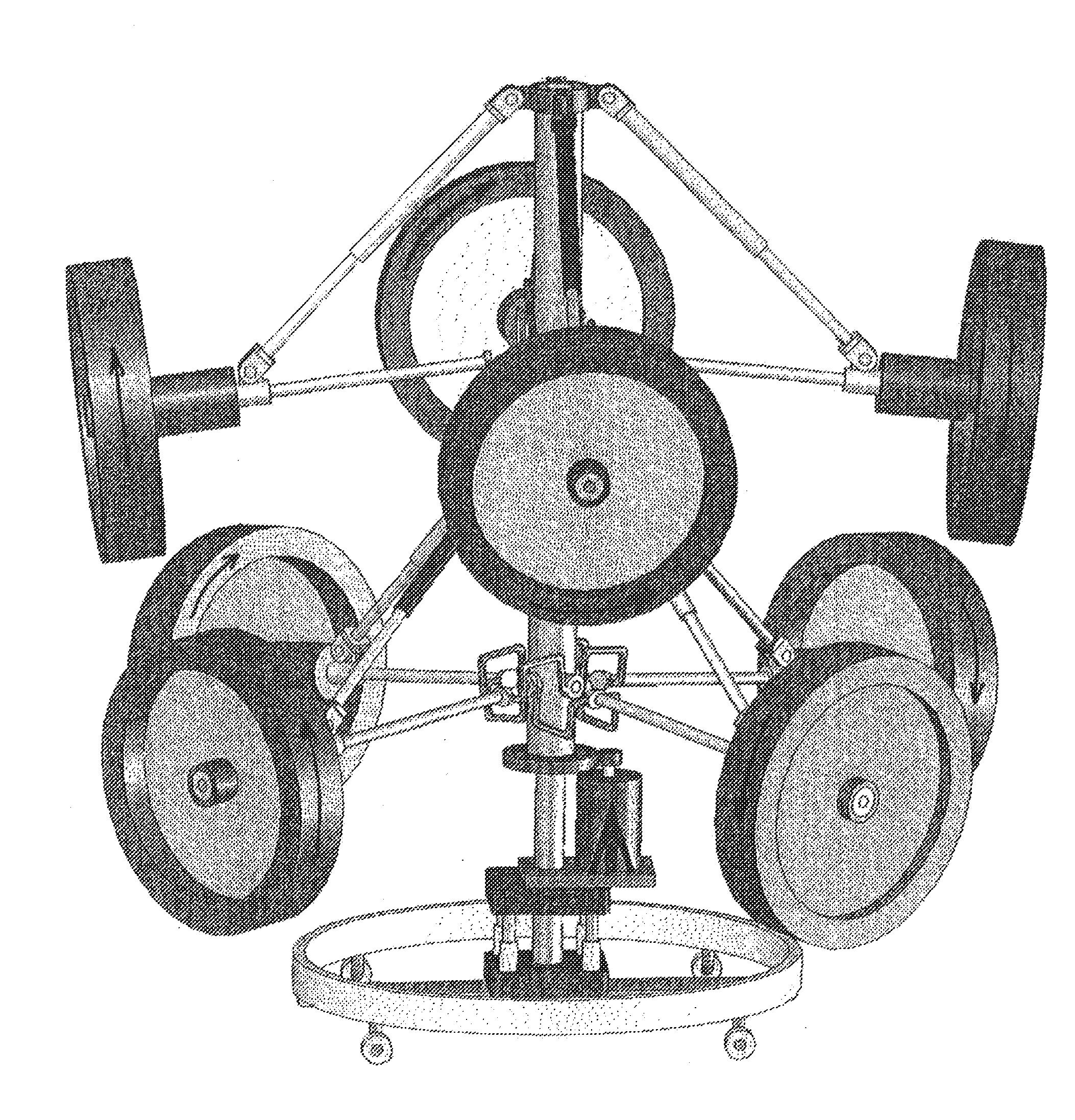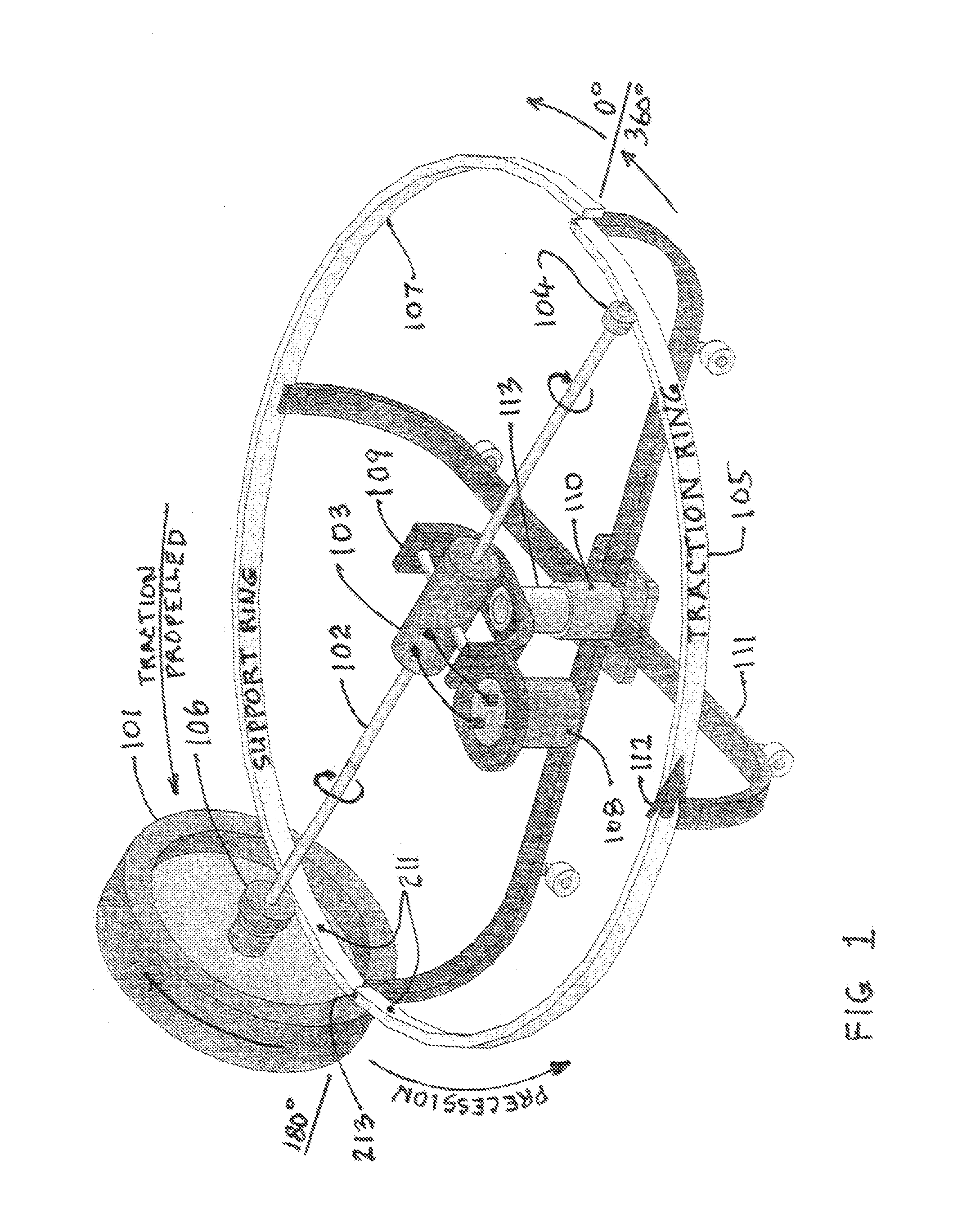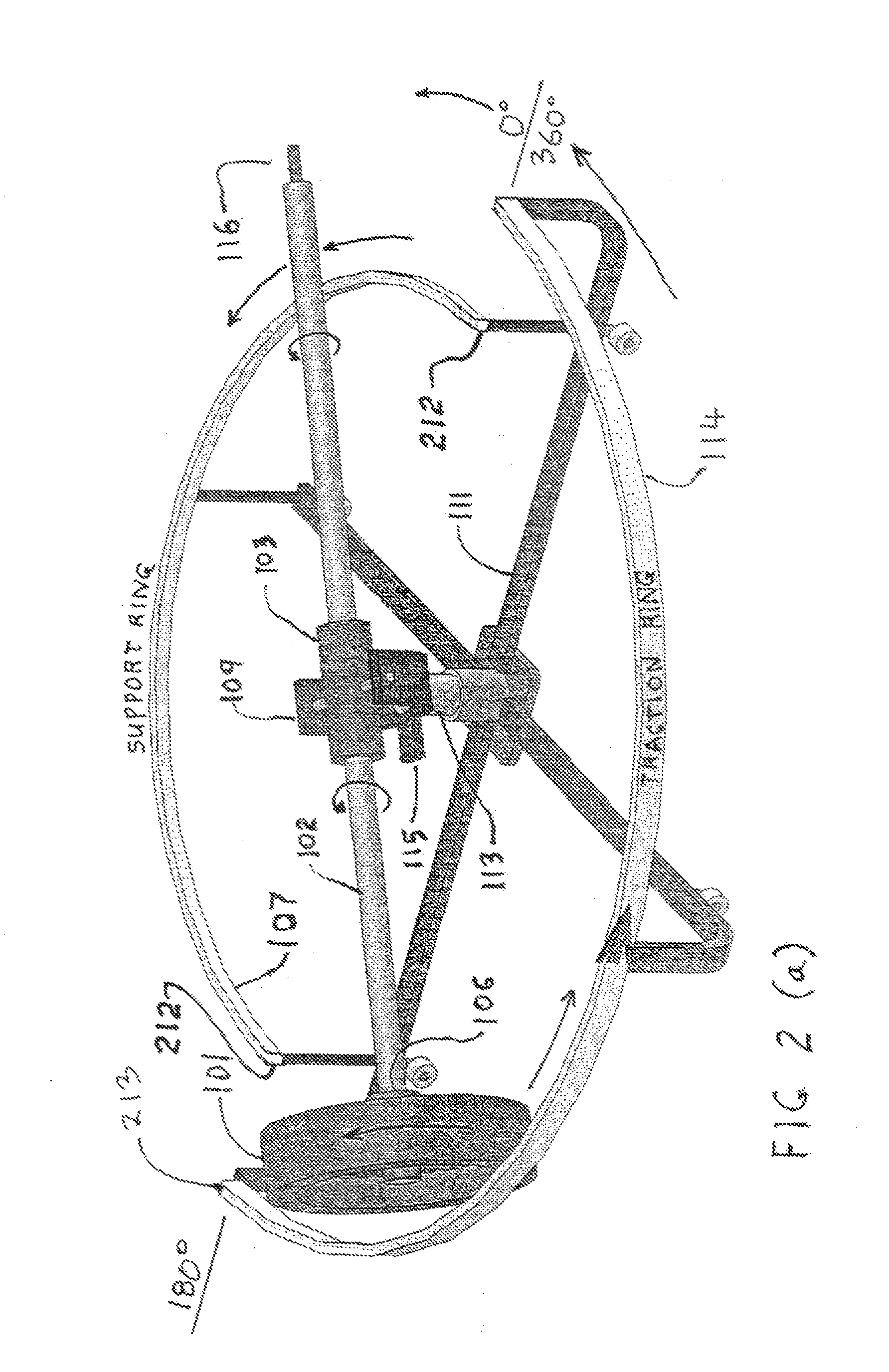Inertial propulsion device to move an object up and down
a propulsion device and object technology, applied in the direction of instruments, machines/engines, cosmonautic vehicles, etc., can solve the problems of requiring large amounts of highly explosive propellants, unable to submit an idea, and unable to meet the requirements of a large number of ideas, etc., to achieve the effect of reducing the problem of rotor speed control, and reducing the number of ideas
- Summary
- Abstract
- Description
- Claims
- Application Information
AI Technical Summary
Benefits of technology
Problems solved by technology
Method used
Image
Examples
Embodiment Construction
[0063]Since inertial propulsion is a new field and there are so many possible configurations, many different configurations have been included in this application. For learning the principles involved, the preferred embodiments are those depicted in FIGS. 1, 20, 41, 48(a), and 52. For HMT the embodiment shown in FIG. 10(a), since all four rotors are driven by the same motor and automatically have the same angular velocity, eliminates any rotor speed control problems. For the sake of simplicity, for VMT the preferred embodiments are those shown in FIGS. 22 and 24, insofar as all torques about the vertical axis are cancelled out. Where multiple rotors require multiple motors, digital stepping motors can be used to maintain exact synchronism between rotors.
LIST OF DRAWINGS
[0064]There are many drawings in this application. The drawings cover both HMT and VMT Class I inertial propulsion devices because they are both precession based and to show one and not the other would take the one ou...
PUM
 Login to View More
Login to View More Abstract
Description
Claims
Application Information
 Login to View More
Login to View More - R&D
- Intellectual Property
- Life Sciences
- Materials
- Tech Scout
- Unparalleled Data Quality
- Higher Quality Content
- 60% Fewer Hallucinations
Browse by: Latest US Patents, China's latest patents, Technical Efficacy Thesaurus, Application Domain, Technology Topic, Popular Technical Reports.
© 2025 PatSnap. All rights reserved.Legal|Privacy policy|Modern Slavery Act Transparency Statement|Sitemap|About US| Contact US: help@patsnap.com



